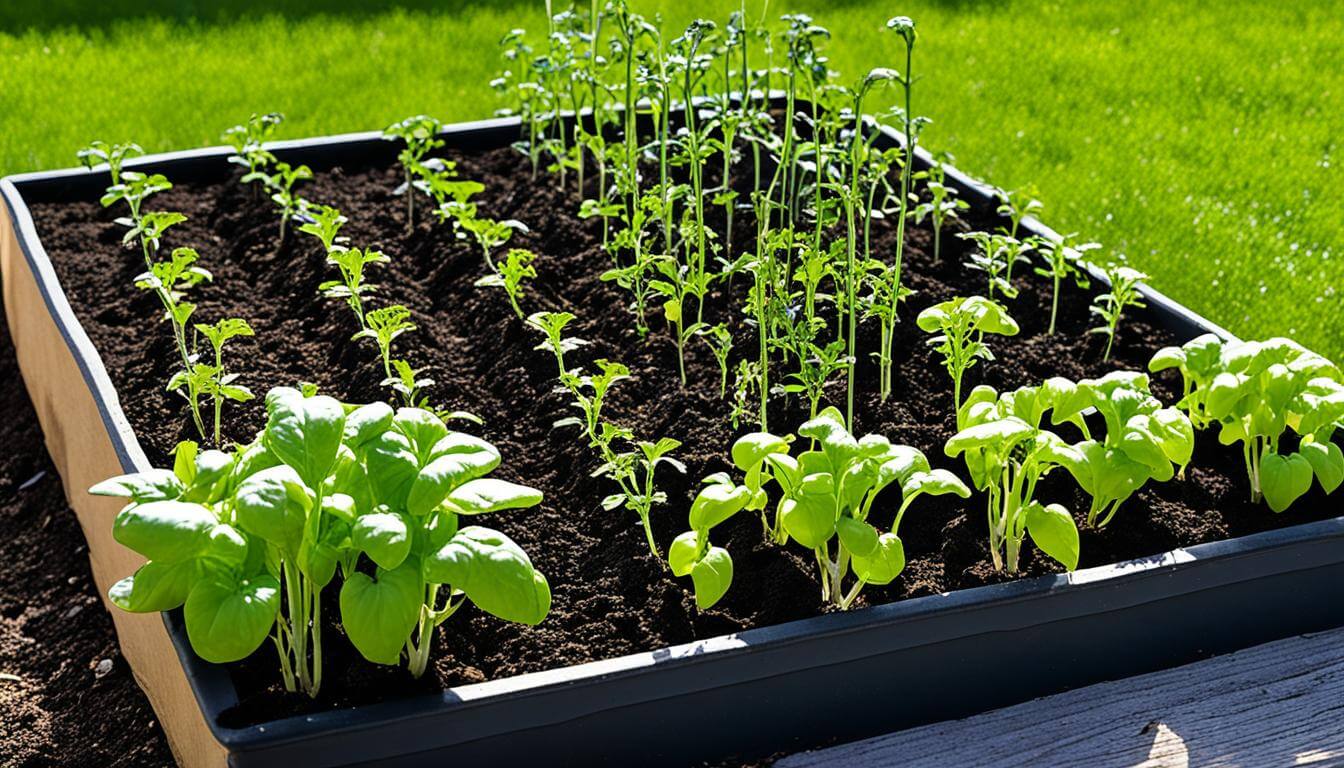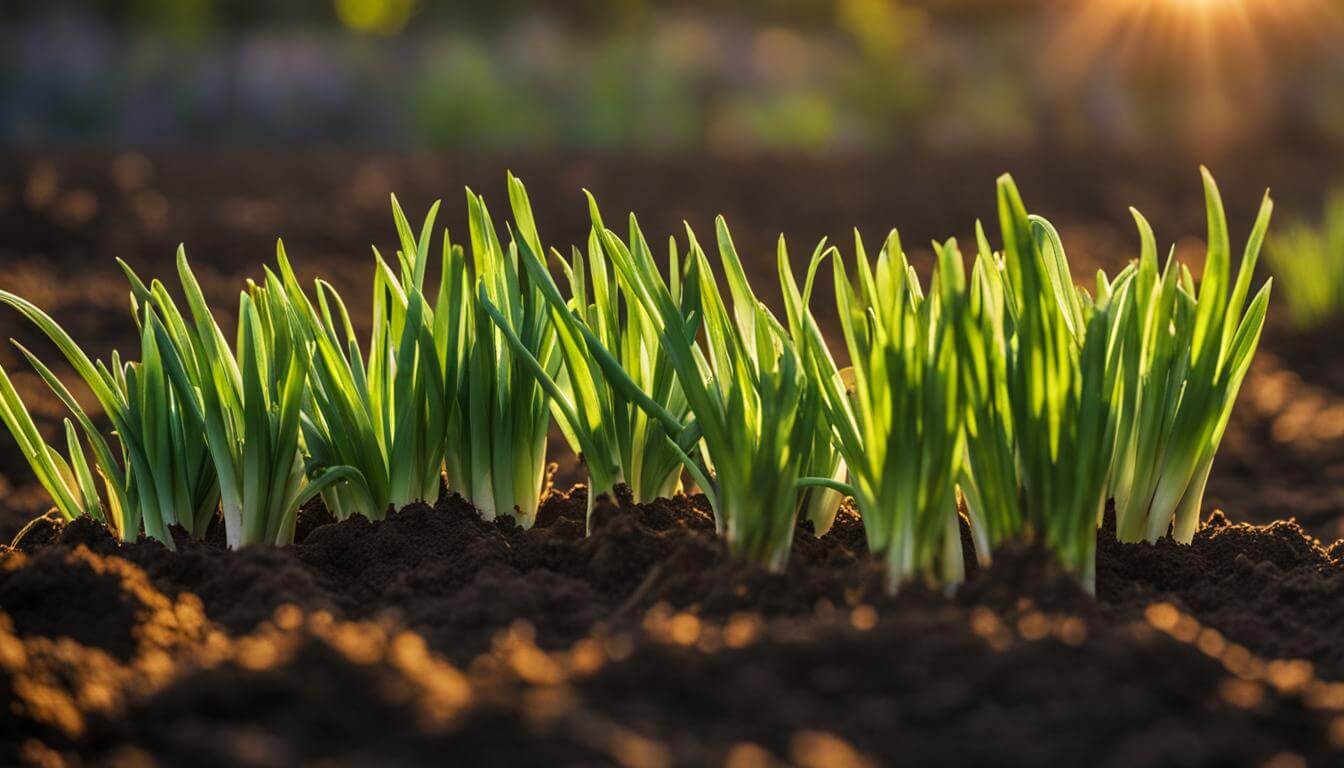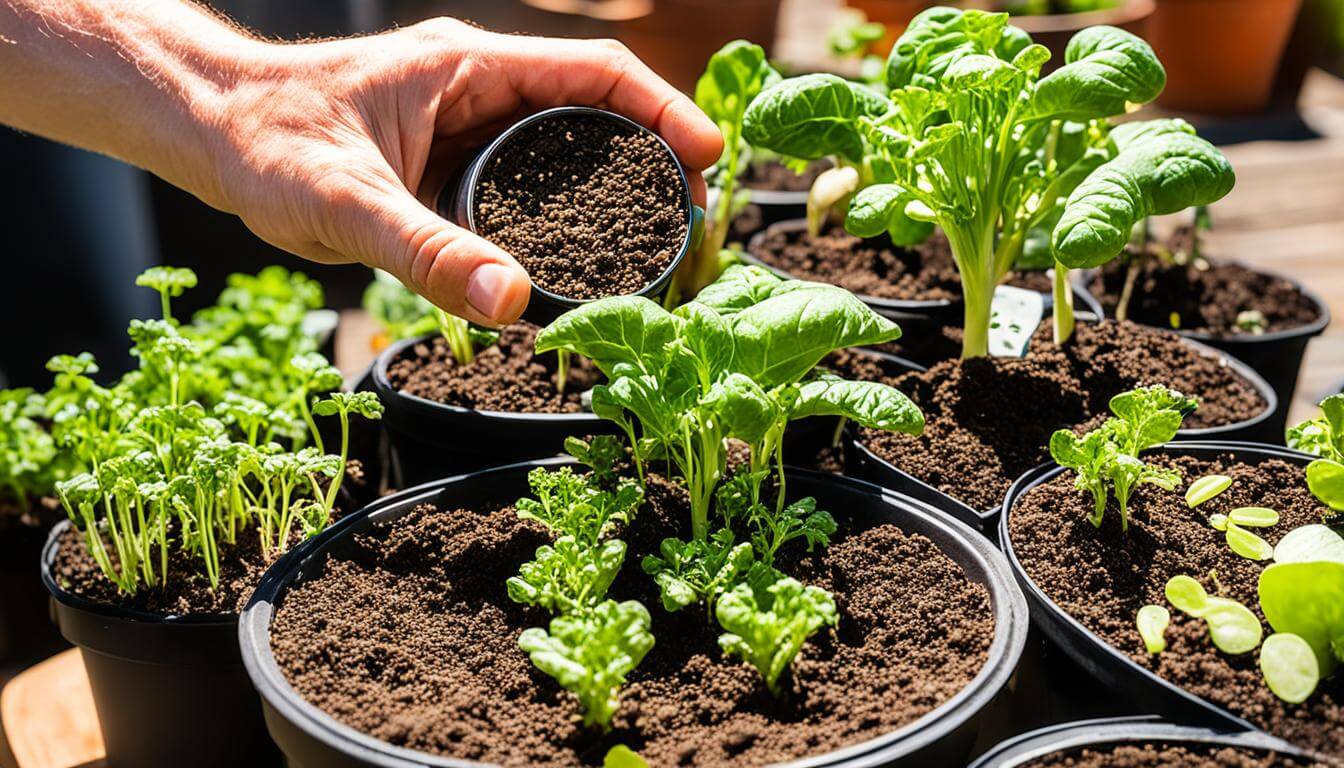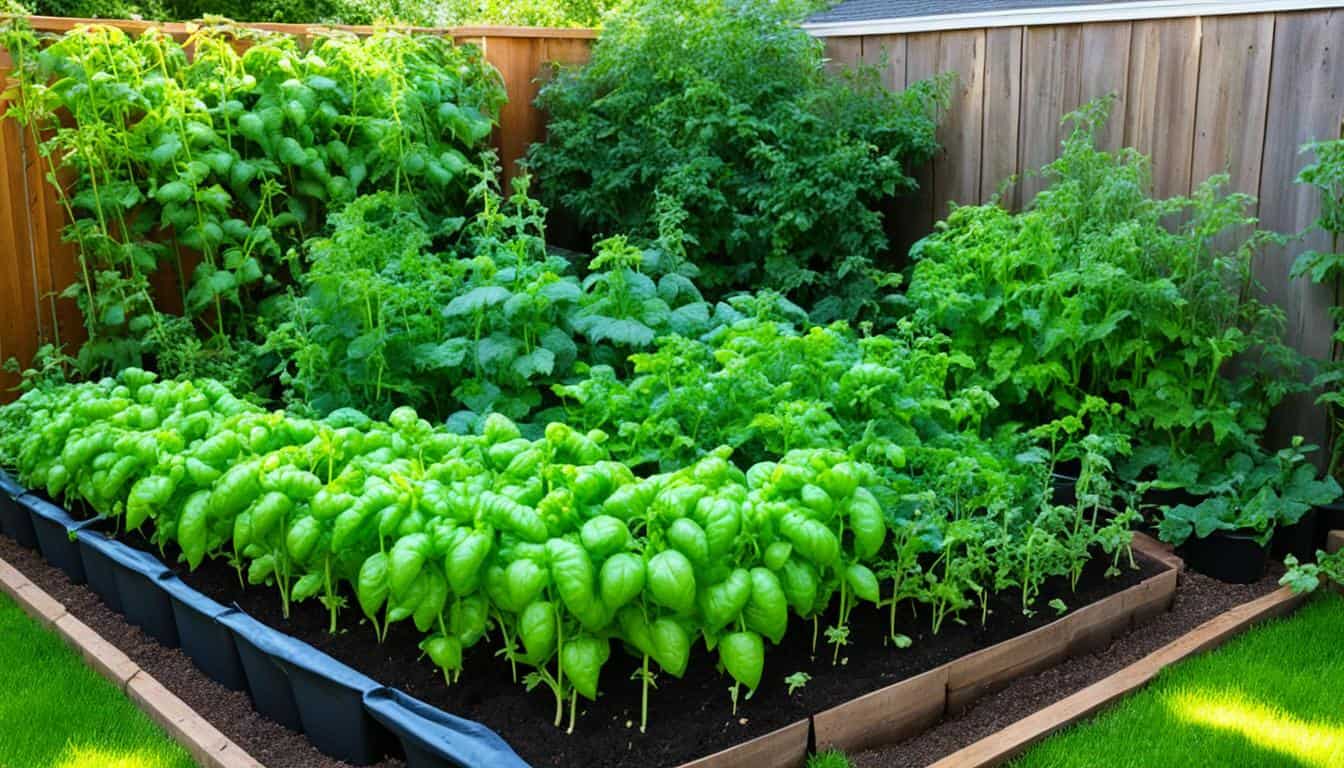As avid gardeners, we embrace the vitality of early spring, a season signaling renewal and growth. It's this time of year when we keenly plant in March, laying the foundational seeds indoors for a flourishing growing season ahead. Our mission is to cultivate an organic medley of fruits and vegetables, starting with those tender shoots that yearn for a nurturing start within the comfort and protection of our homes. Tomatoes, peppers, and brassicas are among our chosen crops, with heirloom seed varieties awaiting their moment to root and rise. Knowing what seeds to start in March will help your garden succeed.
We understand the importance of early planting and aim to guide you through selecting Gardeners Basics heirloom seeds, a testament to our tradition and quality. Together, let's embark on this rewarding journey of seed selection and nurturing as we watch our garden's tapestry unfold with the passing of each sunlit day.
Key Takeaways
- March is an optimal time to start seeds indoors for a head start on the growing season.
- Early spring plantings foster stronger, more resilient plants ready to be transplanted outdoors.
- Gardeners Basics heirloom seeds offer a diverse range of high-quality options for March planting.
- Tomatoes, peppers, and brassicas are ideal for early sowing, promising a bountiful harvest.
- Proper seed selection in March can elevate your gardening experience, aligning with the rhythm of the seasons.
Popular Herb Seeds for Planting | 35 Variety Pack

$29.95
$49.95
Heirloom, non-GMO herb seeds for indoor and outdoor home gardens! Introducing our 35 Herb Seeds Variety Pack, the ultimate selection for any herb garden enthusiast! This premium assortment includes heirloom herb seeds that are non-hybrid, open-pollinated, and non-GMO, ensuring you get only… read more
Why March is the Ideal Month to Start Your Garden
As winter's icy grip loosens, March is the perfect time to lay the groundwork for a thriving garden. We're presented with a unique window of opportunity, aligning with the rhythms of nature for an ideal growing season. It's not just about beating the clock - starting seeds in March is about synchronizing with the earth's awakening, ensuring our plants are poised to take full advantage of the upcoming conditions.
The change in the air is palpable as daylight stretches longer and the soil begins to warm. This signals us to start nurturing those seeds that will lead to an early summer harvest. Commencing now allows us to extend the growing season, which is crucial for crops that require more time to mature. We're not just planting seeds but cultivating early yields and plentiful bounty.
Our experience has shown that certain crops thrive when given this head start. Fast-growing plants benefit immensely from early sowing, outpacing those that linger too long in the starting gates. These early risers anchor the garden, and as gardeners, it gives us immense satisfaction to see sprouts piercing through the soil while much of nature is just beginning to stir. Let's take a closer look at some of the key advantages of starting your garden in March:
- The last frost date is around the corner, safeguarding tender seedlings against the cold.
- Longer daylight hours catalyze the photosynthesis process, which is vital for growth.
- Seeds that start in March will have a robust root system established when they are ready to be transplanted outdoors.
- An extended growing season can mean not just the timing but the volume of your harvest, impacting both quantity and quality.
Embarking on this early planting adventure ensures we are proactive rather than reactive, establishing a solid foundation for a nourishing and plentiful harvest. The rites of spring beckon and the garden soil calls for those precious seeds; let us heed the call and begin the rewarding ritual of spring sowing.
Top Vegetables to Grow When You Start Seeds in March
March's arrival marks a pivotal moment for garden enthusiasts, presenting an early start to the growing season. The focus here is on vegetables that flourish when started indoors and promise a generous yield with the right early care. Among the most rewarding vegetables to grow with early sowing are tomatoes, brussels sprouts, and sweet peppers, each with benefits when planted this month.
Getting a Head Start on Growing Tomatoes
Favoring a lengthier maturation period, growing tomatoes from seeds in March offers an excellent jump on the season. These sunshine-loving plants demand a warmer climate to thrive; hence, nurturing them indoors initially allows them to gain the robustness necessary to endure the transplanting process later.
Why Brussels Sprouts Thrive When Planted in March
The success of brussels sprouts, as a cool-weather crop, is vastly improved when seeds are planted in March. Starting them at this time allows the sprouts to establish their roots in cooler temperatures, which is fundamental for their development and leads to a robust crop in the ensuing months.
The Best Techniques for Sowing Sweet Peppers Indoors
Conversely, sweet peppers are warmth-loving and demand a head start indoors to meet their heat requirements. Initiating the cultivation process now ensures that these plants will be ready by the peak summer months to produce a vibrant display of flavorful peppers.
| Vegetable | Indoor Starting Month | Outdoor Transplanting Month | Harvest Period |
|---|---|---|---|
| Tomatoes | March | May-June | July-September |
| Brussels Sprouts | March | May | September-December |
| Sweet Peppers | March | May-June | August-October |
In conclusion, better outcomes in your garden are assured when you strategically choose the vegetable to grow and optimally time their indoor start. March is undoubtedly the month where we set the stage for a season of abundance, starting seeds indoors for tomatoes, brussels sprouts, and sweet peppers to eventually relish the fruits of our labor.
Starting Seeds Indoors: A Guide for Early Spring Planting
As spring emerges, the ritual of planting a new life cycle begins. To start seeds indoors, we give our crops, such as seed potatoes and spring onions, the nurturing start they need. This foundational practice is more than a task; it is a commitment to the bounty that early spring promises. With careful preparation and timing, these early cultivations are poised to be transplanted outdoors, unfolding into a full harvest season.
Understanding the significance of indoor starting, we look towards the symbiotic relationship between the gardener and the soil. The process involves meticulous attention to detail, from selecting a suitable soil mix to managing the precise needs of each vegetable variety. We are ardent believers that a thoughtful approach in these initial stages lays a sustainable path for the crops that will soon become part of our everyday sustenance.
We advocate starting with a soil mix that is fertile, well-draining, and rich in organic matter, ensuring that your seed potatoes and other vegetables have the best possible start. The magic begins under the gardener's watchful eye and tender care, transforming tiny seeds into robust plants, ready to transition to the greater outdoors when the time is right.
- Ensuring proper soil moisture but avoiding waterlogging to foster strong root growth without the peril of rot.
- Offering sufficient warmth and light—a mimicry of the gentle spring sun—to coax the seedlings from their slumber.
- Monitoring and adjusting ambient conditions, such as humidity and airflow, to emulate the natural outdoor environment as closely as possible.
- Timing the transplantation strategically is important, for each vegetable has its unique rhythm and harmonizes with the climate differently.
Salad Greens Lettuce Seed Assortment | 10 Variety Pack

$15.95
Fresh Lettuce Seed Assortment – 10 Heirloom Varieties, Perfect for Hydroponics, Indoor & Outdoor Gardening! Our 10 Salad Greens Lettuce Seeds Variety Pack is the ultimate selection for any home gardener or hydroponics enthusiast! This carefully curated assortment features heirloom, non-hybrid,… read more
It's crucial to understand that the journey from seed to soil is delicate. The act of transplanting is a significant milestone in a plant's life. Thus, our techniques and timing must reflect the sensitivity required for this transition. Especially for hearty producers like seed potatoes, a careful hardening-off process is needed, which we approach with patience and precision, preparing them to be transplanted outdoors when they've acclimatized to the change.
In our table below, you will find a simplified representation of the indoor planting guide, structured to offer clarity at a glance:
| Vegetable | Seed Starting Date | Soil Type | Hardening-Off Period | Transplanting Timeframe |
|---|---|---|---|---|
| Seed Potatoes | Early March | Loamy, Nutrient-Rich | 7-10 Days | Late April to Early May |
| Spring Onions | Early March | Well-Drained, Fertile | 5-7 Days | Early to Mid-Spring |
Fast-Growing Varieties to Propel Your Springtime Harvest
As the days lengthen and the frost retreats, we find ourselves in early spring, a time ripe for sowing seeds that promise a swift bounty. In this season of renewal, certain fast-growing varieties stand out as the champions of the garden. These plants, exemplified by the versatile and easy-to-grow spring onions, are known for their rapid development from seed to harvestable crop, ensuring that our gardens are not just spaces of beauty but hubs of productivity.
We take pride in selecting varieties that speed up the journey from planting to the plate and bolster our early-season offerings. Among these, spring onions are a notable favorite. Not only do they mature swiftly, but their ability to be harvested at various stages makes them a continuous source of freshness for our meals. Our pleasure is to share with our fellow gardeners that with judicious planning, these quick crops can be sown in succession to guarantee a steady stream of produce even before the main summer harvest commences.
The following table provides an overview of some fast-growing, easy-to-grow varieties that are perfect for sowing in the early spring. These plants are both rapid growers and adaptable, making them suitable for gardeners with various experience levels.
| Vegetable | Planting Timeframe | Days to Maturity | Harvest Tips |
|---|---|---|---|
| Spring Onions | Early March | 60-70 days | Harvest when greens are tall, and bulbs are small |
| Radishes | Early March | 25-30 days | Pull when roots are less than an inch wide for the best taste |
| Spinach | Early March | 40-50 days | Harvest outer leaves allow the center to continue growing |
| Lettuce (Leaf) | Early March | 45-55 days | Rotate where you pick leaves to give plants time to regrow |
By focusing on these fast-growing and easy-to-grow varieties, such as the beloved spring onions and their fellow quick-maturing counterparts, we ensure that our gardens are utilized to their full potential. This deliberate cultivation strategy maximizes our garden space and extends the joys of gardening well into the bustling summer months.
Cool Weather Crops to Start This March and Transplant Outdoors
When the chill of winter begins to fade, we, as garden enthusiasts, are presented with the unique opportunity to start growing cool-weather crops. These resilient varieties are ideally suited to the transitional phases of early spring. They're nurtured in the protection of our homes but are ready to be transplanted outdoors as the climate becomes more forgiving. This period is crucial for enabling a healthy and prosperous start to the gardening year.
Below is an overview of the cool weather crops we recommend starting in March. These selections can withstand cooler temperatures and will be prepared for transplanting once the environment outside is adequate:
| Crop Type | Suggested Varieties | Start Indoors | Transplant Outdoors |
|---|---|---|---|
| Kale | 'Lacinato', 'Red Russian' | March | 3-5 weeks later |
| Swiss Chard | 'Bright Lights', 'Fordhook Giant' | March | 4-6 weeks later |
| Broccoli | 'Calabrese', 'Waltham 29' | March | 5-7 weeks later |
| Spinach | 'Palco', 'Bloomsdale' | March | As soon as soil can be worked |
As we anticipate the optimal conditions for outdoor growth, we pay close attention to soil temperature and consistency—two factors critical for the health of young seedlings. Cool-weather crops like kale and broccoli require rich, well-drained soil, while others, such as spinach, may need more frequent watering and partial shade to shield themselves against the strengthening sun. We aim for a harmonious balance in each case that encourages robust development.
While you foster these crops within your nurturing indoor spaces, ready to be transplanted outdoors, remember that "good things come to those who wait." Patience and careful weather observation will signal the ideal moment to move your plants outside. The rewarding outcome will be harvested that echo the cool, crisp essence of early spring—a genuine tribute to the gardener's dedication.
What Seeds to Start in March
With the advent of early spring, our thoughts turn to the myriad of seeds that start the growing season. For those eager to start seeds indoors, March is the beacon that heralds the commencement of a bountiful garden. We recognize the benefits that planting in March affords our much-anticipated crops. From the fiery colors of bell peppers to the rustic charm of heirloom carrots, these future harvests take root in March.
Here, we delve into the specifics of which seeds to sow, underscoring the significance of their early beginnings within the sanctuary of our homes.
- Tomatoes: Seeking the sun's warmth, these seedlings need a head start indoors before relishing the outdoor garden.
- Peppers: With their zest for heat, starting pepper seeds indoors fosters earlier fruiting when summer peaks.
- Leafy Greens: Hardy spinach and kale varieties relish the lingering chill of March yet gain vigor from a protective start.
- Herbs: Basil, parsley, and cilantro seeds prefer a gentle introduction to the world tucked in the safety of indoor pots.
Starting seeds inside gives us a tactical advantage, enabling these tender sprouts to become resilient settlers in our gardens after the frost has passed. It also paves the way for our kitchens to be graced with the freshest of ingredients grown directly from our labor.
| Crop | Benefits of Indoor Start | Expected Transplant Time |
|---|---|---|
| Tomatoes | Better control over growing conditions; stronger, earlier fruit set | After last frost date, typically 6-8 weeks after germination |
| Peppers | Ensures a warm start, necessary for germination and early growth | 6-8 weeks post-germination, when nightly temperatures remain above 50°F |
| Leafy Greens | Protects from harsh conditions; extends the growing season | 4-6 weeks after starting, as soon as soil can be worked |
| Herbs | Allows for a controlled environment for delicate seedlings | When they are well-established, and all danger of frost has passed |
As pioneers of the spring garden, we are ever mindful of the rhythms of nature, aligning our practices with the seasonal transition. Each seed nurtured in our care is a promise to ourselves and to the earth of our perseverance and reverence for growth. Let us embrace the winds of March, start seeds indoors, and tenderly guide these would-be wonders of our gardens along their path to the sun.
Nurturing the Seedlings: Care Tips for Plants Started in March
As the burgeoning days of early spring bring forth the promise of a new growing season, those who have chosen to start seeds indoors face the vital task of shepherding our fledgling plants toward health and vigor. To ensure that these fast-growing varieties reach their potential to be successfully transplanted outdoors, we must provide an environment conducive to their development.
Watering is paramount—it cannot be overstated how essential a consistent moisture level is to avoid the damping-off of delicate seedlings. However, the balance must be struck; overwatering can be just as detrimental as under-watering. Our seedlings' substrate must remain moist but should never be soggy.
Amidst these critical weeks, adequate lighting becomes the cornerstone of our endeavors. The source of all plant life, light, must be ample but not harsh. It's recommended to place your seedlings near a bright window or under grow lights, ensuring they receive around 14-16 hours of light per day.
- We maintain ambient temperatures of 65-75°F, which offer a comfortable range for most indoor-started varieties.
- We pay close attention to the air circulation around the plants, as adequate airflow is crucial for strengthening stems and preventing disease.
- We subscribe to gentle fertilization practices, applying a balanced, diluted fertilizer that encourages but doesn't overstimulate growth.
- We gradually embark on the hardening-off process, incrementally exposing our plants to the outdoors to acclimate them to their future environment.
A well-planned care regimen during these early spring days ensures our plants will be fit for the eventual transition from their sheltered start to the verdant expanses of our gardens. The table below provides a clear guide on the essential care steps for seedlings that will soon grace our outdoor spaces:
| Seedling Care Step | Description | Timing |
|---|---|---|
| Consistent Watering | Maintain even soil moisture | Daily, as needed |
| Adequate Lighting | Provision of sufficient light for robust growth | 14-16 hours per day |
| Temperature Control | Keep within optimal range for germination and growth | Constant monitoring |
| Air Circulation | Ensure good airflow to strengthen stems and deter disease | Adjust as necessary |
| Gentle Fertilization | Apply diluted, balanced fertilizer | Every 2-3 weeks |
| Hardening-Off Process | Gradually exposed to outdoor conditions before transplanting | Start a couple of weeks before transplanting |
By adhering to these care tips, we take proactive steps to ensure our seedlings flourish, embodying the vibrant energy of a fast-growing and fruitful growing season. And as these nascent lives unfold, soon to be transplanted outdoors, we are reminded of nature's profound cycle of growth—all initiated by starting seeds indoors with faith and foresight.
Conclusion - What Seeds to Start in March
As we stand on the cusp of spring, the garden in March calls to us as the perfect time to start growing. In these transitional days, the patient toil of the gardener is sown, with each heirloom seed planted holding the potential of summer's generous yield. Gardeners Basics heirloom seeds offer an exceptional choice for those looking to imbue their garden with the spirit of heritage and quality. This choice promises to harness the vigor of the season.
Our experience affirms that to begin in March is to align oneself with the natural progression of growth, setting a stage for a symphony of colors and flavors. The effort we invest in now, nurturing and caring for each chosen varietal, is an anticipatory step toward a future of abundance. The fruition of our efforts, as those first green shoots break through the soil, is a testament to our dedication and a beacon of joy in the coming seasons.
Let us embrace the rich gardening tradition, confident that our steps today will blossom into the lush tableau of tomorrow's gardens. By choosing to start seeds indoors during March—be they robust tomatoes or delicate herbs—we lay down the roots for a bountiful harvest that is deeply satisfying to the soul. As the sun's rays grow warmer and the days longer, we find solace in knowing that our early spring endeavors will soon bring forth the fullness of life in our gardens.
Wildflower, Perennial, & Annual Flower Seed Kit | 35 Variety Pack

$29.95
$49.95
35 Flower Seeds Variety Pack – Heirloom, Non-Hybrid, Non-GMO, Open-Pollinated – Perfect for Pollinator-Friendly Gardens Transform your garden with our 35 Flower Seeds Variety Pack, offering a stunning and diverse selection of heirloom, non-hybrid, and non-GMO seeds. Each variety in… read more
FAQ - March Seed Starting
What seeds should I start indoors in early spring?
In early spring, it's ideal to start seeds indoors for plants that require a longer growing season, such as tomatoes, sweet peppers, brussels sprouts, and some heirloom varieties. Starting these seeds indoors gives them a head start for later transplanting outdoors.
Why is March considered the perfect time to start a garden?
March is often seen as the perfect time to start a garden because it precedes the end of frost dates in many regions, providing seedlings with longer daylight hours to grow before being transplanted outdoors. This sets the stage for an early summer harvest and a longer growing season.
Which vegetables thrive when planted in March?
Vegetables that thrive when planted in March include tomatoes, brussels sprouts, and sweet peppers. The growing process in March allows these plants to establish properly and flourish throughout the growing season.
How do I start seeds indoors?
To start seeds indoors, select the appropriate soil mix, plant them at the depth recommended on the seed packet, keep them moist, and provide sufficient warmth and light. This process can jumpstart the growth of vegetables, such as seed potatoes and spring onions.
What are some fast-growing varieties that can be sown in early spring?
Fast-growing varieties that can be sown in early spring include spring onions, lettuce, spinach, and certain fast-maturing herbs. These crops grow quickly and can often be harvested well before the main summer crops are ready.
Can I start cool weather crops in March, and which are best suited for this?
March is a great time to start cool-weather crops such as kale, arugula, peas, and herbs. These crops can be started indoors and then transplanted outdoors when suitable.
What are the key factors to remember when planting seeds in March?
When planting seeds in March, consider the last frost date for your area, the length of the growing season needed for your plants, and whether they need to be started indoors or can be directly sown outside. Also, plan for enough space for when seedlings are ready to be transplanted outdoors.
How should I care for plants that I started from seeds in March?
For plants started from seeds in March, ensure they receive adequate water, are kept at a stable temperature, and get plenty of indirect sunlight. As they grow, provide support structures if needed and acclimate them to outdoor conditions through hardening off before transplanting.










